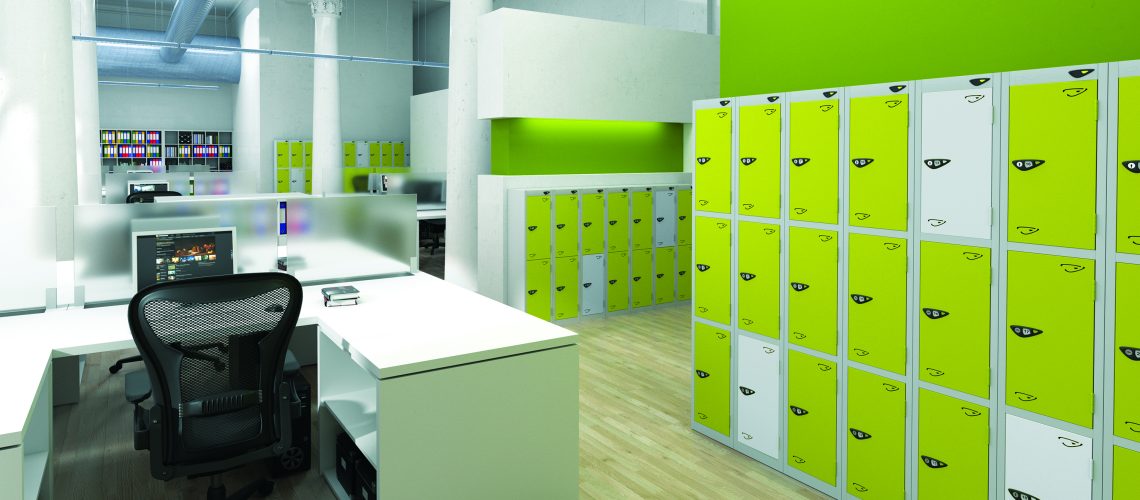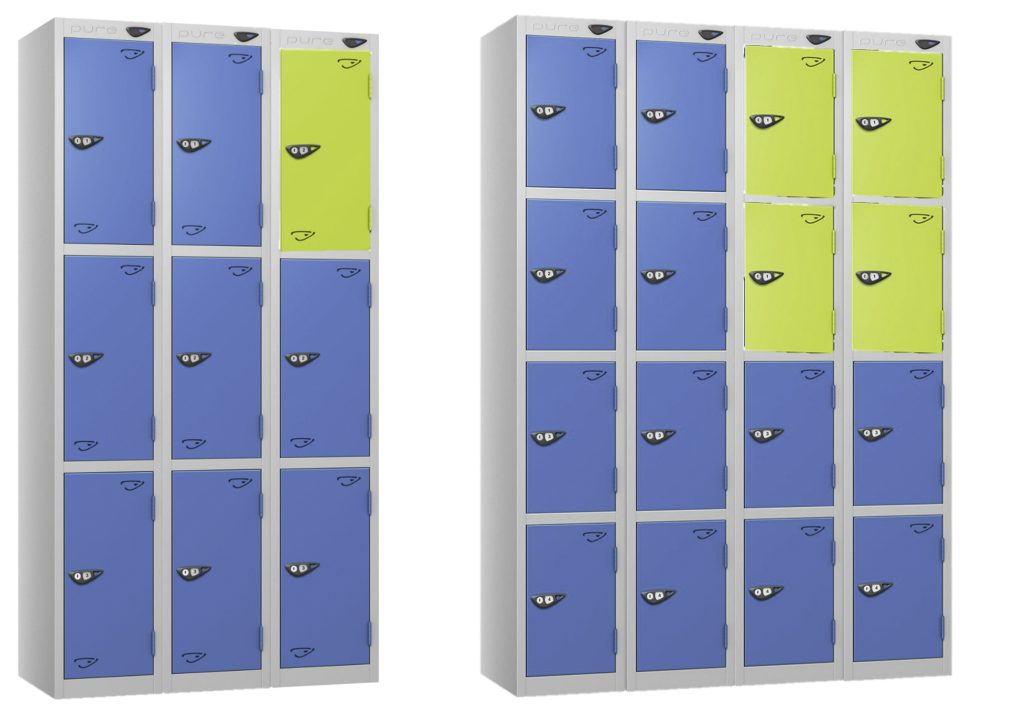Sustainable Lockers: The Complete 2025 Guide to Eco-Friendly Storage Solutions for Schools, Gyms, and Workplaces
August 11, 2025

Introduction – Sustainable Lockers
Sustainable lockers are changing how people think about storage. They protect the planet and reduce waste. At the same time, they save money over the long term. In many sectors, demand for greener storage is growing. Schools, gyms, workplaces, and hospitals now look for eco-friendly solutions as standard.
These lockers are made from materials that are either recycled or renewable. Their designs aim for durability. When their useful life ends, the materials can be reused or recycled. This reduces landfill waste and saves valuable resources.
In this guide, we will explore every aspect of sustainable lockers. We will cover the materials, lifecycle benefits, environmental standards, and applications across different industries. By the end, you will know why they are a smart choice and how to select the right ones for your needs.
Why Sustainable Lockers Matter
In today’s world, sustainability is not just a trend. It is a responsibility. Governments, businesses, and individuals are all working towards reducing their environmental impact. One of the most effective ways to do this is by making better choices about the products we use every day.
Sustainable lockers are part of this solution. Unlike traditional lockers made from virgin steel or non-recyclable plastics, they are designed with a minimal environmental footprint. They use recycled steel, bamboo laminates, or high-density polyethylene (HDPE) made from recycled plastics.
By choosing these lockers, organisations demonstrate environmental leadership. They can also meet sustainability targets, such as BREEAM or LEED certification. For schools and public sector buildings, this can support funding bids or compliance with green procurement policies.
Eco-Friendly Materials in Sustainable Lockers
The choice of materials makes the biggest difference in sustainable lockers. Let’s look at the most common options:
Recycled Steel
Recycled steel has the same strength as virgin steel but with a much lower carbon footprint. It can be recycled over and over without losing quality. This makes it a closed-loop material. Lockers made from recycled steel are sturdy, secure, and resistant to wear.
High-Density Polyethylene (HDPE)
HDPE is a type of plastic made from post-consumer waste, such as milk bottles. It is waterproof, impact-resistant, and rust-proof. This makes it ideal for wet environments like gyms, pools, and leisure centres. It is also easy to clean and maintain.
Bamboo Laminates
Bamboo grows quickly, making it a renewable and sustainable material. When used in locker panels, it offers a warm, modern look. It is also strong and resistant to warping.
Phenolic Resin Panels
Phenolic resin panels are made from layers of paper or fabric infused with resin. When manufactured with sustainable sources, they offer excellent durability and water resistance.
Each of these materials can be chosen based on the specific needs of the environment, ensuring the lockers remain functional, attractive, and sustainable.

Lifecycle Benefits of Sustainable Lockers
Sustainable lockers offer a much longer lifecycle than traditional options. Here’s why:
- Durability: High-quality materials resist dents, scratches, and corrosion.
- Low Maintenance: Surfaces are easy to clean and require less frequent repairs.
- Recyclability: At the end of their life, lockers can be broken down and the materials reused.
- Cost Efficiency: Fewer replacements mean savings over time.
Lifecycle assessments (LCA) show that sustainable lockers often have a lower total cost of ownership compared to cheaper, low-quality alternatives. They reduce waste and maximise material reuse, supporting circular economy principles.
Sustainability Standards and Certifications – Sustainable Lockers
Environmental standards help buyers choose truly sustainable lockers. Some key certifications include:
- FSC Certification: Guarantees wood and bamboo come from responsibly managed forests.
- ISO 14001: Indicates the manufacturer has an effective environmental management system.
- BREEAM & LEED Points: Many sustainable products can contribute to green building certifications.
- Environmental Product Declarations (EPDs): Provide transparent information on the environmental impact of the lockers over their lifecycle.
When evaluating lockers, always check for these certifications. They ensure you are investing in products that genuinely meet environmental claims.
Cost Advantages Over Time
Sustainable lockers can cost more at the point of purchase. However, this initial cost is offset by long-term savings:
- Lower Maintenance: Fewer repairs and replacements are needed.
- Longer Lifespan: Materials remain functional and attractive for many years.
- Recycling Value: End-of-life materials can have scrap value.
Many organisations find that sustainable lockers pay for themselves over time, making them a financially smart choice as well as an ethical one.
Applications in Different Sectors – Sustainable Lockers
Different environments have different demands. Sustainable lockers can be adapted to suit all sectors:
Schools and Universities
Students use lockers daily. Sustainable lockers made from recycled steel or HDPE withstand heavy use while supporting the school’s green credentials.
Gyms and Leisure Centres
Moisture resistance is critical. HDPE and phenolic resin panels excel here, as they resist mould, rust, and swelling.
Workplaces and Offices
Modern offices value both appearance and sustainability. Bamboo or recycled steel lockers fit well in corporate environments.
Hospitals and Healthcare
Hygiene is essential. HDPE and other non-porous materials can be cleaned easily and thoroughly.
By selecting the right materials for the right setting, organisations can maximise both functionality and sustainability.
Installation and Disposal Practices
Sustainable lockers are not just about the product itself – installation and disposal also matter.
- Modular Systems: These reduce transport costs and allow for flexible layouts.
- Efficient Delivery: Grouping deliveries cuts fuel use and emissions.
- Take-Back Schemes: Some suppliers will collect old lockers for recycling.
- Minimal Packaging: Reducing packaging waste supports sustainability goals.
Good disposal practices ensure that no part of the locker ends up in landfill unnecessarily.
Future Trends in Sustainable Lockers
The locker industry is evolving quickly. Here are some trends to watch:
- Biodegradable Materials: Research is underway into panels that break down safely at the end of life.
- Carbon-Neutral Manufacturing: Factories are switching to renewable energy.
- Smart Technology Integration: Lockers that use sensors to optimise usage and reduce energy waste.
- Circular Economy Models: Companies taking back used lockers, refurbishing them, and reselling as part of a zero-waste policy.
These innovations will make sustainable lockers even more attractive in the years ahead.
How to Choose the Right Sustainable Lockers
Choosing the right lockers means considering several factors:
- Assess Your Needs: What size and style do you require?
- Select the Material: Match the locker material to the environment.
- Check Certifications: Look for FSC, ISO 14001, BREEAM, or LEED.
- Plan for Disposal: Choose suppliers with take-back or recycling programmes.
- Compare Costs Over Time: Don’t just look at purchase price – consider lifecycle costs.
With these steps, you can select lockers that are practical, attractive, and environmentally responsible.
Conclusion – Sustainable Lockers
Sustainable lockers are an investment in the future. They reduce environmental impact, save money over time, and meet the growing demand for greener products. From schools to offices, gyms to hospitals, there is a sustainable solution for every setting.
By making the switch, you send a clear message: your organisation values quality, sustainability, and responsibility. That message resonates with customers, employees, and the community.
Discover more from Blog Total Locker Service
Subscribe to get the latest posts sent to your email.